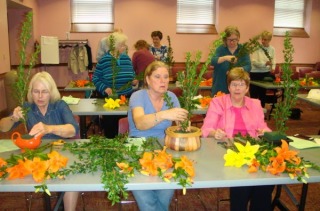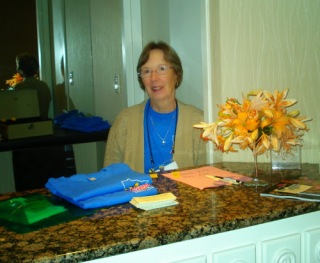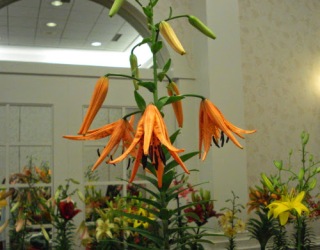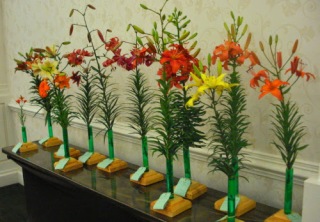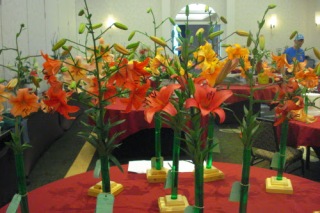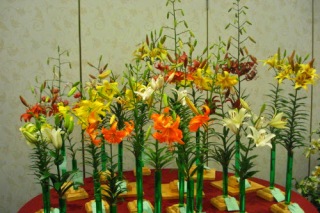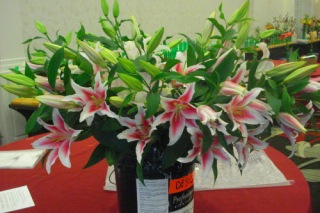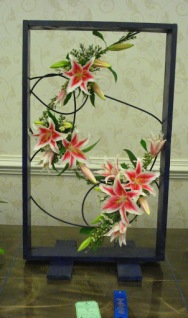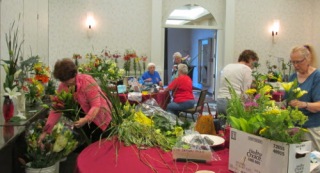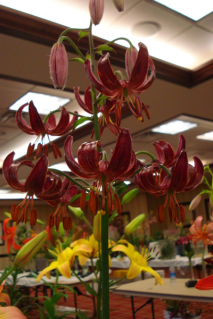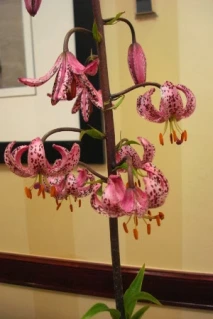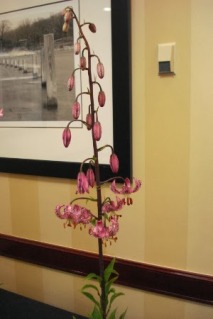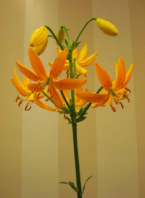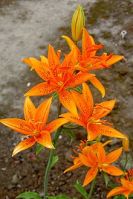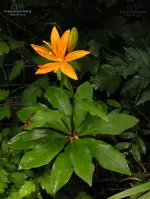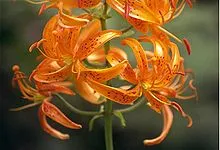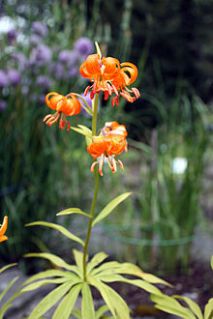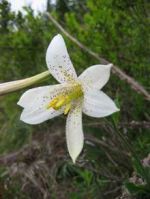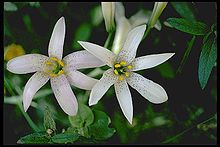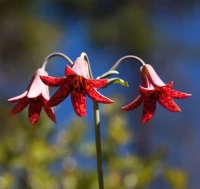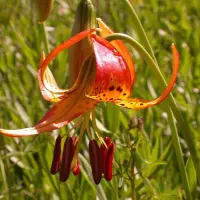Our third presenter at the 2013 NALS Convention was Dr. Ieuan Evans, who grew up on a small farm in a Welsh speaking fishing community. He graduated from the University of Wales and then completed his PhD in plant diseases at the University of Florida in 1969. He has worked in agriculture in Ontario and Alberta and continues to work full time. Dr. Evans has been growing lilies since 1996 on acerage at Spruce Grove, Alberta.
Martagon lilies are usually hybrids between Lilium Martagon and several related species. With the related species be native to Central Europe, Siberia and Mongolia. The most common crosses are between Lilium Martagon (white, maroon, and spotted forms) and the yellow L. hansonii or orange L. tsingtauense. L. Martagon will cross with the North American L. kellogii and with Asiatic lilium via tissue culture. The Asiatic crosses are called martasians.
In nature all the martagon species typically grow in very cold climates, such as those that go to 40 degrees below. They seem to tolerate acidic to alkaline soils and grow well in full sun to very heavy shade. They usually do well in an East facing location where shade begins at 2pm each day. Martagons do well in lightly wooded areas and are good companions for ligularia, fiddle head ferns, hemp nettle, and wild raspberries. In the open garden, Martagons seem to thrive on heavy applications of peat moss (1 to 2 inch layer) used as mulch to also help control annual weeding.
Dr. Evan’s martagon crosses range from 3 to almost 9 feet tall when grown under light shade. Their colors come in every color and shade except blue. Once they are established in the garden, they can virtually be left forever. On Martagon bulb in a favorable location will double every couple of years. In 6 – 7 years you should have a vigorous clump of thriving lilies. Martagons do have the habit of not emerging every year, but they will stay healthy underground and emerge the next year.
How do I multiply my Martagons?
Patience in growing Martagons
Buy 5 – 10 martagon bulbs in early September and plant them immediately, at a 5 inch depth, in well-drained soil. Plant them at different locations in your garden…some in half shade. Spring planting is only successful when you purchase pot grown plants. Martagons planted during spring will probably not flower or emerge above ground. If they like your planted location, you should have a nice clump of martagons during the next 5 -10 years. In some gardens and locations Martagons are slow to multiply and grow.
Rapid Martagon Multiplication
If you are already growing martagons and purchased bulbs during September consider scaling. Scaling is a procedure of removing the outer scales of a martagon bulb and effectively reduces the size of the original bulb by up to 50 percent.
a) Plant the original scaled bulb 5 inches deep and at the two inch level in the planting hole, after filling the first 3 inches, place the martagon bulb scales. These scales will form bulblets, overwinter and emerge as seedlings around the original bulb. If you scale and plant during October or November, the scales will form bulblets, but will not emerge until the following year. Usually 19 – 20 months after planting.
b) You can also plant the scales 2-3 inches deep, in carefully marked rows because the emergence of the scales my skip a year. Weed the row, but don’t dig it. If you have heavy clay soil, you may consider filling the top 2 inches with potting soil or a coarse mixture of peat, perlite and vermiculite.
c) The Evans Method. Dr. Evans scales his selected bulbs in September. Places the scales in peat moss that is in clear plastic containers with tight lids. Each plastic container will hold a pint of peat moss. He puts 3 layers of scales into the peat moss container, numbering from 10 to 30 scales depending on the size of the scales. The peat moss should be barely moist. Moisten the peat moss the day before you use it. After putting the scales into the peat moss place a lid on top and label it. The scales will not suffocate because the plastic allows the entry of oxygen.
The peat moss will protect the scales from fungi and bacteria. The containers should be kept at room temperature until New Year’s Day. At that time the scales should have formed bulblets. These bulblets won’t grow until they have been vernalized (given a prolonged cold period at around 32 degrees for 3 – 4 months. This is accomplished by placing the containers into the coldest part of a spare refrigerator space. Do not worry if the containers freeze in the refrigerator.
d) If you do not have plastic containers, you can use small ‘ziplock’ bags and follow the Evans Method discussed above. Plant the mass of roots, scales and bulblets produced as described below.
In late April or early May plant out the containers. Dump out the peat moss and scales into your hand and place the mass of scale, bulblets, and roots directly into a 4 inch deep hole in your garden. Then cover with sandy loam soil, sand or potting soil mix. If you pull the scales and bulblets apart, they will grow very poorly.
In a few weeks you will see the emerging bulblets. These are new martagons that you can dig and separate in a few years (always in September or earlier). Dr. Evans planted over 100 new varieties using this method and his success rate was 95 percent with first flower in 1 – 3 years.
Growing Martagons from seeds
If you are already growing Martagons, collect the seeds during August for September before the pods shatter.
a) Sow the seeds immediately into the ground about 1 inch deep. Water in, and if you have a mild autumn the tiny martagon seedlings will emerge in May. With care and weeding, you should have flowering martagons in 3 -7 years.
b) You can also use the Evans Method for scales, but place 50 – 200 seeds per container. Follow the Evans Method outlined previously and place the container contents into 4 inch holes and cover with an inch of potting mix. The seedlings will emerge like blades of grass in a couple of weeks after a 3 month chilling period in late April or early May.
c) You can also collect your seed and scatter it in shady or scrubby areas of your garden. In a few years you will notice martagons popping up everywhere. Dr. Evans has martagons through his wood lot, under trees and shrubs, and some are flowering at the edge of a poorly kept lawn.
— Lynn Slackman
 These are Scheherazade Oriental Trumpet lilies. They’ve been in the same place for a decade. These bulbs produce flowers that range from 5 feet to 7 feet high.
These are Scheherazade Oriental Trumpet lilies. They’ve been in the same place for a decade. These bulbs produce flowers that range from 5 feet to 7 feet high.



